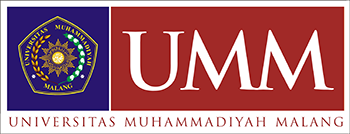The Benefit of Bureaucratic Simplification for Bontang City Government
DOI:
https://doi.org/10.22219/logos.v6i2.25051Keywords:
bureaucratic simplification; local government;organizational performanceAbstract
The purpose of this study is to ascertain the advantages of administrative simplification for the Bontang City Government. The methodology in this study is qualitative. Interviews, observation, and documentation were used to gather the data, which was then analyzed utilizing an interactive analytical model through the steps of data reduction, data presentation, and conclusion-making. The research results show benefits bureaucratic simplification in Thus it can be concluded that productivity has increased compared to before the simplification of bureaucracy in the Bontang City Government look of the dimensions of the productivity, responsiveness and accountability.In dimension work productivity among others line of a bureaucratic becoming more efficient and effective. Documents completed immediately according to SOP can be completed immediately on the same day, no need to wait for tomorrow or the day after tomorrow. Bureaucratic simplification in dimension responsiveness benefits include employees become more responsive to work, so that the implementation of services becomes fast and precise. Increase innovation services and the complaints has declined and Complaints about service are decreasing. While benefits bureaucratic simplification in dimension accountability among others more can provide services, motivate employees to employees can develop themselves. Better and well-measured supervision from superiors, tiered supervision.
Downloads
References
Allen, B., Tamindael, L. E., Bickerton, S. H., & Cho, W. (2020). Does citizen coproduction lead to better urban services in smart cities projects? An empirical study on e-participation in a mobile big data platform. Government Information Quarterly, 37(1). https://doi.org/10.1016/j.giq.2019.101412
Aminah, S., & Saksono, H. (2021). Digital transformation of the government: A case study in Indonesia. Jurnal Komunikasi: Malaysian Journal of Communication, 37(2), 272–288. https://doi.org/10.17576/JKMJC-2021-3702-17
Arshad, S., & Khurram, S. (2020). Can government's presence on social media stimulate citizens' online political participation? Investigating the influence of transparency, trust, and responsiveness. Government Information Quarterly, 37(3). https://doi.org/10.1016/j.giq.2020.101486
Bramantyo, A., & Mardjoeki. (2020). Urgensi penyederhanaan birokrasi dalam menignkatkan kinerja organisasi. Depok: Kemenkumham Press.
Defitri, S. Y., Bahari, A., Handra, H., & Febrianto, R. (2020). Determinant factors of e-government implementation and public accountability: Toe framework approach . Public Policy and Administration, 19(4), 37–51. https://doi.org/10.13165/VPA-20-19-4-03
Dunleavy, P. (2013). Democracy, Bureaucracy and PUblic Choice Economic Explanations in Political Science. Victoria:Pearson College Div. https://www.amazon.com/Democracy-Bureaucracy-Public-Choice-Explanations/dp/0132011468
Dwiyanto, A. (2017). Reformasi birokrasi publik di Indonesia. Yogyakarta: Gadjah Mada University Press.
Fatoni, A. (2020). Fiscal Decentralization Dilemma in Indonesia: Between Corruption Accountability and Probability at Local Levels. Jurnal Bina Praja, 12(1), 101–110. https://doi.org/10.21787/jbp.12.2020.101-110
Garofalo, C. (2019). Surviving bureaucracy: Patterns of corruption, prospects for reform. Corruption in a Global Context. London:Routledge. https://doi.org/10.4324/9780367822125
Gaus, N., Sultan, S., & Basri, M. (2017). State Bureaucracy in Indonesia and its Reforms: An Overview. International Journal of Public Administration, 40(8), 658–669. https://doi.org/10.1080/01900692.2016.1186179
Hajar, B. (2015). Bureaucracy and Governance in Indonesia: Study on West Sulawesi Province. Procedia Economics and Finance, 23(October 2014), 223–227. https://doi.org/10.1016/s2212-5671(15)00348-2
Haug, A. V. (2018). Innovation and network leadership: The bureaucracy strikes back? Information Polity, 23(3), 325–339. https://doi.org/10.3233/IP-170052
Ismail, Fathonih, A., Prabowo, H., Hartati, S., & Redjeki, F. (2020). Transparency and corruption: Does E-government effective to combat corruption? International Journal of Psychosocial Rehabilitation, 24(4), 5396–5404. https://doi.org/10.37200/IJPR/V24I4/PR201636
Latif, D. V, & Roespinoedji, D. (2021). The Prevention of Corruption as A Result of Implementing E-Government: A Geographical Review of Indonesia. Review of International Geographical Education Online, 11(3), 210–217. https://doi.org/10.33403/rigeo.800485
Marista, D., Mursyidah, L., & Wijaya, F. R. (2022). Penyederhanaan birokrasi di Kebun Raya Purwodadi BRIN. Publisia: Jurnal Ilmu Administrasi Publik, 7(1), 15–25. https://doi.org/10.26905/pjiap.v7i1.7386
Marthalina, M. (2021). Analisis Dampak Pengembangan Karir PNS Pasca Pelaksanaan Alih Jabatan Struktural ke Jabatan Fungsional. Jurnal MSDA (Manajemen Sumber Daya Aparatur), 9(1), 42–55. https://doi.org/10.33701/jmsda.v9i1.1716
Maryudi, A., Sahide, M. A. K., Daulay, M. H., Yuniati, D., Syafitri, W., Sadiyo, S., & Fisher, M. R. (2022). Holding social forestry hostage in Indonesia: Contested bureaucracy mandates and potential escape pathways. Environmental Science & Policy, 128, 142–153. https://doi.org/https://doi.org/10.1016/j.envsci.2021.11.013
Nizamuddin. (2021). Efektivitas Penyederhanaan Birokrasi Pemerintah Pada Masa New Normal. JUMANT, 12(2), 151-159. Retrieved from https://jurnal.pancabudi.ac.id/index.php/JUMANT/article/view/1069
Pierskalla, J. H., Lauretig, A., Rosenberg, A. S., & Sacks, A. (2020). Democratization and Representative Bureaucracy: An Analysis of Promotion Patterns in Indonesia's Civil Service, 1980–2015. American Journal of Political Science, 65(2), 261-277. https://doi.org/10.1111/ajps.12536
Pratama, P. E., Kamil, M., & ... (2019). Implementation of the Integrity Zone Development Program towards a Corruption-Free Area and a Serving Clean Bureaucracy Region. Journal of Local Government Issues, 2(2), 134–148. https://doi.org/10.22219/logos.Vol2.No2.134-148
Purbokusumo, Y., & Santoso, A. D. (2021). Predictor for local government social media use in Indonesia. Digital Policy, Regulation and Governance. https://doi.org/10.1108/DPRG-12-2018-0082
Putkowska-Smoter, R., & Niedziałkowski, K. (2020). Street-level bureaucracy in response to environmental pressure. Insights from forestry and urban green space governance in Poland. Environment and Planning C: Politics and Space. https://doi.org/10.1177/2399654420972114
Rahmanda, V., & Nasution, M. I. P. (2022). Analisis Motiviasi dan Kinerja pada Penyederhanaan Birokrasi di Kantor Walikota Binjai. Jurnal Ilmu Komputer, Ekonomi dan Manajemen (JIKEM). 2(1), 1684-1688.
Rai, S. K., Ramamritham, K., & Jana, A. (2021). Government to government (G2G) framework to strengthen communication among government agencies during disasters: Learnings from 2015, Gorkha earthquake, Nepal. International Journal of Electronic Governance, 13(1), 73–96. https://doi.org/10.1504/IJEG.2021.114272
Ristala, H., & Rahmandika, M. A. (2022). Penyederhanaan Birokrasi Dan Transformasi Kelembagaan Demi Mewujudkan Pelayanan Publik Yang Prima Di Lingkungan Pemerintah Provinsi Jawa Barat. Jurnal Academia Praja, 5(1), 117–126. https://doi.org/10.36859/jap.v5i1.956
Riyadi, B. S., Wibowo, B. R., & Susanti, V. (2020). Culture of corruption politicians' behavior in parliament and state official during reform government Indonesia (genealogical study). International Journal of Criminology and Sociology, 9, 52–62. https://doi.org/10.6000/1929-4409.2020.09.06
Roman, A. V, & Miller, H. T. (2013). New questions for e-government: Efficiency but not (yet?) democracy. International Journal of Electronic Government Research, 9(1), 65–81. https://doi.org/10.4018/jegr.2013010104
Roy, J. (2013). Bureaucracy Versus Mobility. In Public Administration and Information Technology (Vol. 2, pp. 17–27). Springer. https://doi.org/10.1007/978-1-4614-7221-6_2
Rusliandy. (2022). Analisis Kebijakan Penyederhanaan Birokrasi Pemerintah Daerah. Kolaborasi : Jurnal Administrasi Publik, 8 (1), 53–70. https://doi.org/https://doi.org/10.26618/kjap.v8i1.7197
Saputra, N. A. A., & Setiawan, D. (2021). Fiscal Decentralization, Accountability and Corruption Indication: Evidence from Indonesia. Jurnal Bina Praja, 13, 29–40. https://doi.org/10.21787/jbp.13.2021.29-40
Setini, M., Yasa, N. N. K., Supartha, I. W. G., & Giantari, I. G. A. K. (2021). The effects of knowledge sharing, social capital and innovation on marketing performance. International Journal of Data and Network Science, 5(3), 257–266. https://doi.org/10.5267/j.ijdns.2021.6.008
Sihidi, I. T., Sugiharto, M. A., & Nurkhanifah, L. (2021). The Effectiveness of Smart City Program Through Batu Among Tani Teknologi (BATT) in Batu City, Indonesia. Publik (Jurnal Ilmu Administrasi), 10(1), 1-17. https://doi.org/10.31314/pjia.10.1.1-17.2021
Silitonga, M. S., Anthonio, G., Heyse, L., & Wittek, R. (2015). Institutional change and corruption of public leaders: A social capital perspective on Indonesia. In Decentralization and Governance in Indonesia. https://doi.org/10.1007/978-3-319-22434-3_9
Situmorang, C. H. (2019). Studi Analisis Undang-Undang Aparatur Sipil. Jurnal Sosial Dan Humaniora, 4(3), 329–349. https://doi.org/10.47313/pjsh.v4i2.699
Tumanggor, B. F., & Wibowo, E. K. (2021). Motivasi Kerja dan Kinerja Pegawai Negeri Sipil Pasca Implementasi Kebijakan Pengalihan Jabatan Struktural Eselon III, IV dan V ke Jabatan Fungsional di Pemerintah Pusat dan Daerah. Jurnal Sumber Daya Aparatur, 3(1), 57–70. https://jurnal.stialan.ac.id/index.php/JSDA/article/view/275
Turner, M., Prasojo, E., & Sumarwono, R. (2022). The challenge of reforming big bureaucracy in Indonesia. Policy Studies, 43(2), 333–351. https://doi.org/10.1080/01442872.2019.1708301
Wekke, I. S., & Hajar, B. (2015). Capacity Building in Reformation: Study on Bureaucracy of West Sulawesi, Indonesia. Procedia Economics and Finance, 23(October 2014), 244–248. https://doi.org/10.1016/s2212-5671(15)00349-4
Yulianita, N., Nurrahmawati, N., & Maryani, A. (2020). Analysis of the Anti-Corruption Campaign for Engagement and Action on Social Media. MIMBAR : Jurnal Sosial Dan Pembangunan, 36(1), 110–118. https://doi.org/10.29313/mimbar.v36i1.5352
Zulyani, E. P. (2020). Agile Government dalam Mewujudkan Birokrasi yang Berkelas Dunia. Spirit Publik: Jurnal Administrasi Publik, 15(1), 78–90. https://doi.org/https://doi.org/10.20961/sp.v15i1.40717
Downloads
Published
How to Cite
Issue
Section
License
Copyright (c) 2023 Daryono Daryono, Aji Ratna Kusuma, Saropah Saropah

This work is licensed under a Creative Commons Attribution-ShareAlike 4.0 International License.
Authors who publish with this journal agree to the following terms:
- Authors retain copyright and grant the journal right of first publication with the work simultaneously licensed under a Creative Commons Attribution-ShareAlike 4.0 International License. that allows others to share the work with an acknowledgment of the work's authorship and initial publication in this journal.
- Authors are able to enter into separate, additional contractual arrangements for the non-exclusive distribution of the journal's published version of the work (e.g., post it to an institutional repository or publish it in a book), with an acknowledgment of its initial publication in this journal.
- Authors are permitted and encouraged to post their work online (e.g., in institutional repositories or on their website) prior to and during the submission process, as it can lead to productive exchanges, as well as earlier and greater citation of published work (See The Effect of Open Access).

This work is licensed under a Creative Commons Attribution-ShareAlike 4.0 International License.













